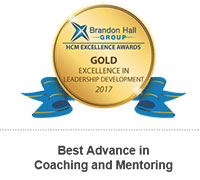Leadership, Employee Engagement, Affinity Groups, and Diversity
 Just 27% of employees said their current organization offers a formal mentoring program, according to the “Creating a Culture of Mentorship” report by Heidrick & Struggles. Yet, it’s widely reported that 70% of Fortune 500 companies have a formal mentoring program. So what is the disconnect?
Just 27% of employees said their current organization offers a formal mentoring program, according to the “Creating a Culture of Mentorship” report by Heidrick & Struggles. Yet, it’s widely reported that 70% of Fortune 500 companies have a formal mentoring program. So what is the disconnect?
Unfortunately, many employees don’t realize that their employers have mentoring programs because the programs are for a limited, targeted audience—one in which they don’t fit. However, with the LEAD mentality, organizations can begin to harness the power of mentoring via multiple initiatives and approaches so that a greater number of employees are impacted by the amazing practice of mentoring.
LEAD stands for Leadership, employee Engagement, Affinity groups, and Diversity. With this framework, you can start to see where mentoring can fit into various pockets of your organization to help you create a broader, overarching mentoring culture.
Leadership
Leadership development programs pretty much always include some form of mentoring as part of their design. Organizations want their future leaders to learn from their current leaders and other experts in the company, so they spend the time, money, and resources to ensure that this select group has access to mentoring relationships through a formal program.
Leadership development is a great starting place for mentoring if you are a professional tasked with launching a mentoring initiative and/or creating a culture of mentoring at your organization. Leadership development is a natural fit for mentoring and can help you accelerate your efforts for building up a talent pipeline.
Employee Engagement
 Gallup research from August 2018 showed the percentage of engaged employees at 34%, tying their highest reported level since they started researching employee engagement in 2000. However, that still means 66% of the workforce are either actively disengaged (13%) or not engaged (53%). That largest chunk of the employee population—the 53% who are not engaged—”may be generally satisfied but are not cognitively and emotionally connected to their work and workplace” according to Gallup. This is a problem, one that organizations can use mentoring to help address.
Gallup research from August 2018 showed the percentage of engaged employees at 34%, tying their highest reported level since they started researching employee engagement in 2000. However, that still means 66% of the workforce are either actively disengaged (13%) or not engaged (53%). That largest chunk of the employee population—the 53% who are not engaged—”may be generally satisfied but are not cognitively and emotionally connected to their work and workplace” according to Gallup. This is a problem, one that organizations can use mentoring to help address.
Engaging your employees and making them want to stay with your company is something many organizational leaders worry about in relation to Gen Z and Millennials. Generational expert Ryan Jenkins researched Gen Z and found that despite being digital natives, they want a human touch at work. The top two most important factors for Gen Z at work are (1) supportive leadership and (2) positive relationships at work. Participating in a mentoring relationship can help provide both.
In fact, research from River found that 90% of mentees and mentors said mentoring helped them develop a positive relationship with another individual in the company, while 89% said they felt like their company valued their development because they offered a mentoring program. Employee engagement and mentoring can make a powerful combination.
Affinity Groups
 Building a support network at work and learning from colleagues and experts can make all the difference for people as they navigate their careers and professional development. Finding people with whom they have something in common can take that to a new level, providing people with support from colleagues who know what they are going through.
Building a support network at work and learning from colleagues and experts can make all the difference for people as they navigate their careers and professional development. Finding people with whom they have something in common can take that to a new level, providing people with support from colleagues who know what they are going through.
Some organizations launch mentoring programs in conjunction with affinity groups, for example veterans’ groups, women’s groups, and LGBTQ groups. Sodexo uses River mentoring software for their Spirit of Mentoring program, which includes a Peer2Peer Mentoring program. This Peer2Peer program is an informal mentoring program through Sodexo’s Employee Business Resource Groups (EBRGs) that supports such EBRGs as:
- iGen – an intergenerational roundtable group that brings together peers from various generations to share with and learn from one another.
- HONOR – a military network group that uses a buddy-system approach through mentoring to help transition former military personnel into civilian and corporate life.
- PRIDE – an LGBTQ and allies group that connects partners for professional development and reverse mentoring.
- WiNG – a women’s network group that uses topical mentoring in mentoring circles to share, learn, collaborate, and grow with colleagues.
Championing your organization’s affinity groups and employee resource groups by incorporating mentoring as a development tool can create a wonderful collaboration and starting point for improving your organizational culture.
Diversity
Using mentoring in conjunction with diversity and inclusion efforts remains one of the top reasons why people contact us. Explicitly supporting D&I initiatives by helping people engage in mentoring helps break down barriers that can isolate people and which can negatively impact their career growth.
 Sodexo’s formal IMPACT program—another segment of their Spirit of Mentoring program—connects high-potential managers with senior leaders cross-culturally and across business lines in paired relationships that last 12 months. They have achieved amazing success with this program, including winning with River a gold Brandon Hall Group Excellence in Leadership Development Award in the category of Best Advance in Coaching and Mentoring.
Sodexo’s formal IMPACT program—another segment of their Spirit of Mentoring program—connects high-potential managers with senior leaders cross-culturally and across business lines in paired relationships that last 12 months. They have achieved amazing success with this program, including winning with River a gold Brandon Hall Group Excellence in Leadership Development Award in the category of Best Advance in Coaching and Mentoring.
The IMPACT program showed a strong return on investment, with $2 saved for every $1 spent. The IMPACT program also reported a:
- 10% increase in promotional rates for women in the program compared to the general managerial population
- 5% increase in promotional rates for minorities
- 4% increase in promotional rates for women of color
Finding ways to incorporate mentoring into your organizational culture can greatly impact your employees and your bottom line. The LEAD framework is a great place to start for bringing mentoring to more people in your organization, but don’t stop there; there are many other potential points of integration for mentoring that extend beyond those noted in this blog. River can help you strategize and determine ways that you can do more with mentoring. Contact us today to get started.








